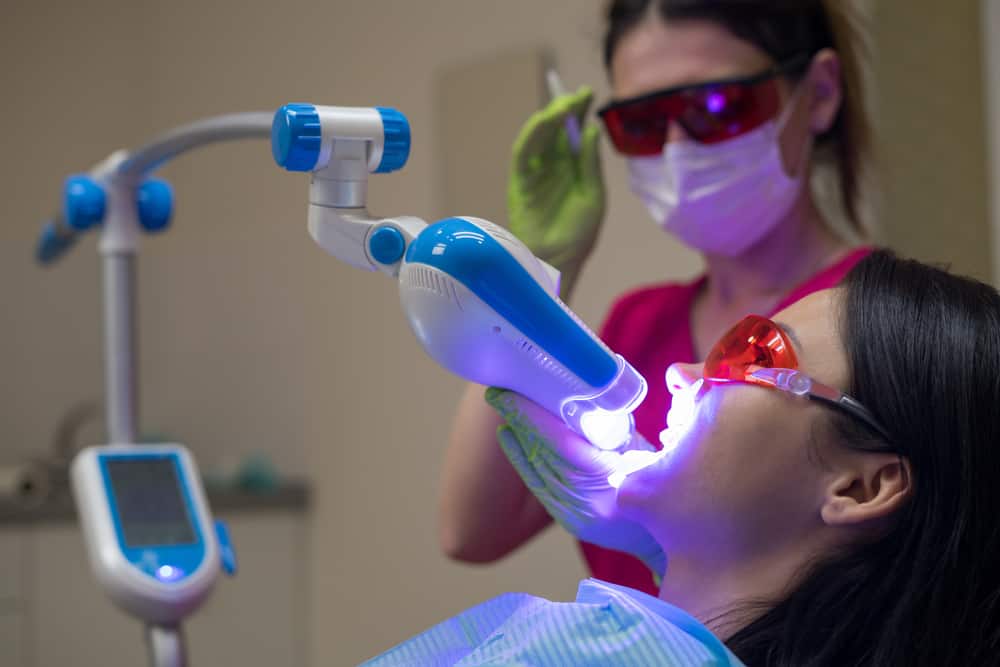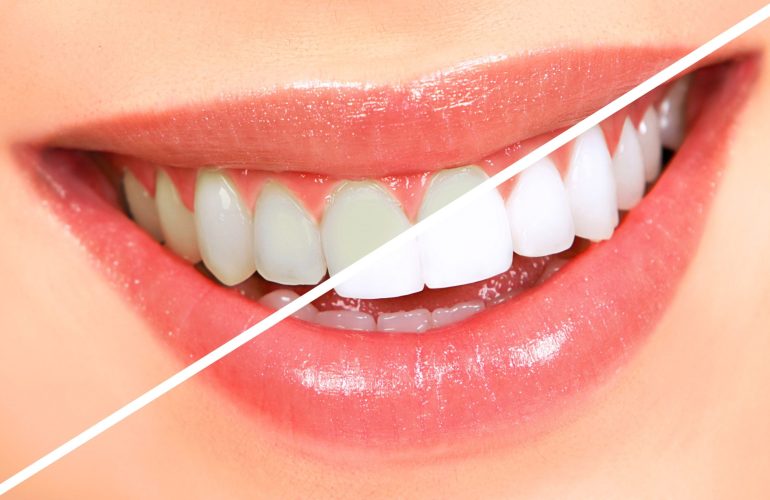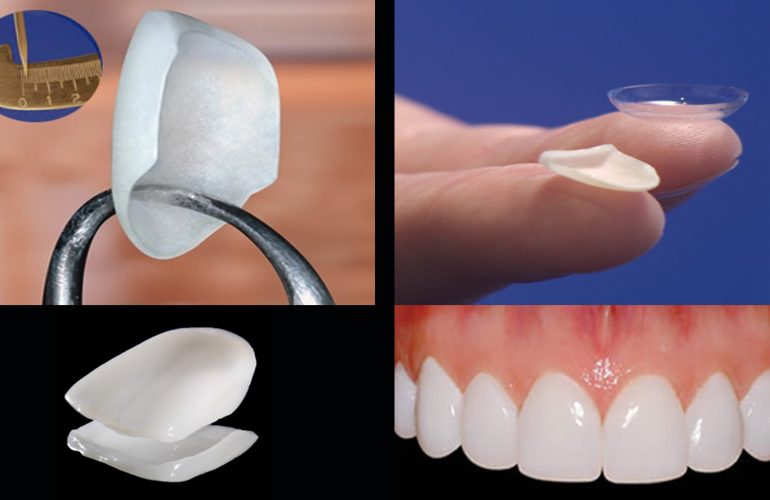Prevention Still the Best Treatment
Taking good care of your teeth might mean that you never have to experience dental laser treatment. Practice good oral hygiene and remember to:
- Brush twice a day
- Clean in between your teeth with interdental brushes, floss, or water flossers
- Add a mouthwash to your oral care routine
- Visit your dentist twice a year.
This innovative procedure may not replace traditional dentistry, but with emerging studies, lasers could be a more common device in your dentist’s practice. Talk to your dentist to learn more about dental laser treatment.
How Does Laser Crown Lengthening Work
The portion of the tooth that protrudes above the gum is called the crown, or clinical crown. Sometimes certain people don’t have enough clinical crown of the tooth protruding, for either aesthetic considerations, or optimal dental health. It’s what is often referred to as a “gummy smile”.
Sometimes, it becomes necessary to lengthen the crown due to injury or decay, say when a tooth has been broken off along the gum line. For the dentist to be able to affix a porcelain crown to the broken tooth, more crown or part of the root must be exposed. Crown Lengthening is the removal of portions of the gum to expose more of the crown. This can be achieved in two ways, either through surgical procedure or, secondly, by the use of laser technology.
How Does Laser Dentistry Work?
Lasers emit light at various wavelengths. In addition to the emission of light energy, lasers are also able to concentrate that light energy into extremely small spots of light. Most dental lasers work in a range of 0,25mm to 1,25mm. As the human body is composed of 70% water, and this is particularly true of soft gum tissue, the tiny spot of light vaporizes the tissue by using the body’s ability to absorb laser light, which in turn generates heat. The amount of light absorbed is in direct proportion to the wavelength emitted.
In laser crown lengthening, the laser can be used either to ablate (vaporize) the tissue required, or to use as one would a scalpel. In both cases, it is the exposure of more tooth material that is required.
The laser light can either be emitted continuously or it can be emitted intermittently as a pulse. The pulse method gives better control by the dentist and helps him or her to monitor the effect of the heat, both at the point of contact and in the surrounding tissue. Laser dentistry can be done on soft tissue, such as gum tissue, and hard tissue such as bone equally effectively.
Advantages of Laser Crown Lengthening
- There is less blood in the area that the dentist is working on with laser technology than with the conventional use of a scalpel. This also means that the dentist is better able to see what he is doing.
- Laser crown Lengthening is also less time-consuming than conventional methods. This means that the dentist can get more done in less time.
- There is a significantly shorter healing time after laser crown lengthening, and less post-operative pain.
- Although laser dentistry can be performed without the use of anesthetics, most dentists prefer the use of local anesthesia in conjunction with laser dentistry, especially when working on hard bone tissue.
- Laser Crown Lengthening is noiseless. The patient relaxes far more during the procedure, compared to more conventional use of high speed drills and grinders.
Crown Lengthening is just one of the many applications of laser dentistry, and as can be seen, the advantages will ensure that laser crown lengthening continues to take its rightful place in today’s dentistry. If you’d like to know more about laser crown lengthening, call us for your consultation appointment.
How Laser Periodontal Therapy Treats Gum Disease
Understanding Periodontal Disease
Periodontal or gum disease is an infection of the supporting tissues and bone that hold your teeth in place. It’s an advanced stage of infection in your gums. If discovered while still in the stage known as gingivitis, it can be reversed with a rigorous oral care routine. But periodontal disease requires professional intervention. The condition mainly affects adults in their 30s and 40s, according to the National Institute of Dental and Craniofacial Research (NICDR). The risk factors for periodontal disease include:
- Poor oral hygiene
- Smoking
- Chronic illnesses, such as diabetes
- Certain medications
- Genetic susceptibility
Scaling and root planing is the standard treatment for periodontal disease. This non-surgical deep cleaning removes tartar, plaque (biofilm), and bacteria from the tooth at and below the gumline and its roots. It also promotes your gum tissue’s regeneration to grow back snug around your tooth.
How Laser Therapy Works
Laser therapy is not a standalone treatment but works in conjunction with traditional therapies. In periodontal laser therapy, your periodontist uses a laser to access and remove the inflamed gum tissue from around your tooth’s root. They then remove the tartar and plaque built up below and around your gumline. Next, they use a different tool to smooth out any rough spots on your tooth above and below the gumline. Removing these rough spots mitigates the chance your teeth and gums will attract more bacteria and get future infections.
After laser therapy, your mouth will need time to heal and regenerate. During this healing process, your gums should be infection-free and be able to tighten back up around your tooth, like a turtleneck that fits nicely around your neck!
Note that not all dental professionals use laser therapy. Those who decide to treat patients with this therapy undergo training on using lasers. This ensures they have the proper technique and understand how to use different wavelengths correctly.
Risks and Benefits
There are several benefits to using lasers for clearing out diseased gum tissue. The four main advantages of using laser therapy to treat gum disease are as follows:
- Recovery and healing times are shorter.
- You won’t need general anesthetic, as is sometimes required for other forms of dental surgery.
- Lasers can target the diseased areas precisely and accurately.
- There’s less bleeding, pain, and swelling because periodontal laser therapy is less invasive than regular surgery.




